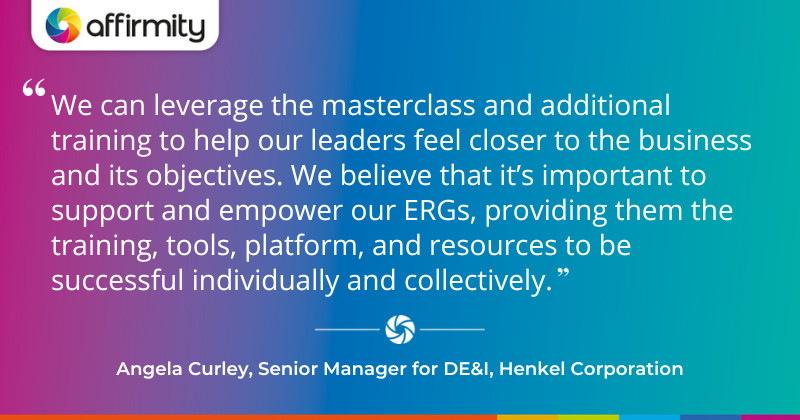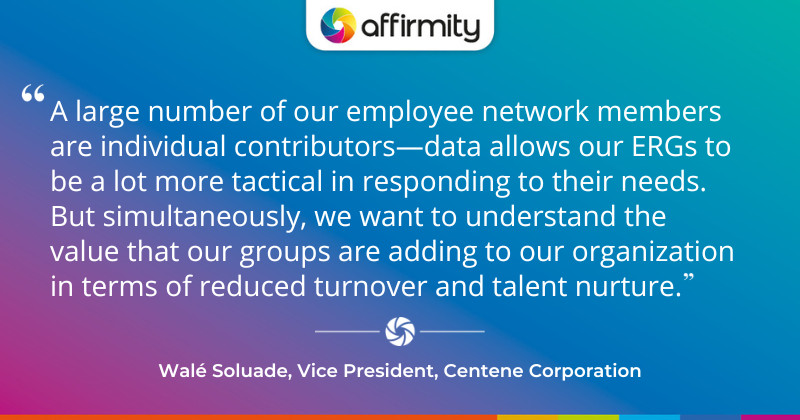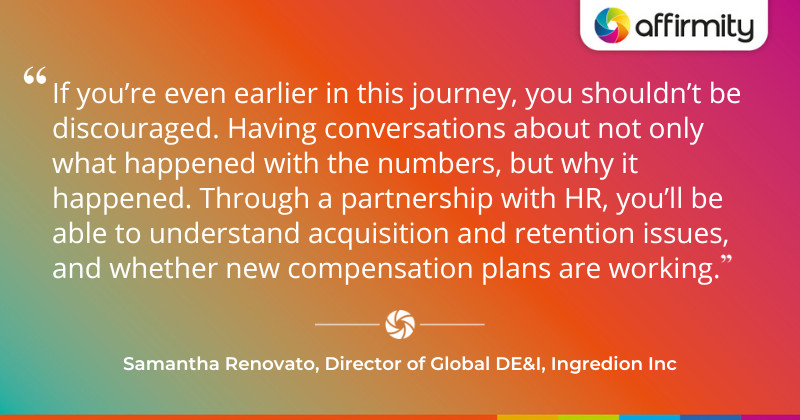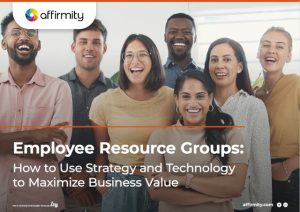Motivating your people to establish and grow Employee Resource Groups (ERGs) is a complex issue despite the considerable mutual benefits that such groups can have to both people and organizations. Even the most engaged and passionate members can become disillusioned if it’s too difficult to organize events, keep track of members, and keep everyone informed. We asked a number of DE&I leaders at global corporate businesses—all ERG platform users—how their ERG and HR technology helps them keep people invested while providing invaluable new insights into ERG effectiveness.
What Groundwork Is Needed for Effective ERGs and ERG Tech?

Angela Curley is Senior Manager for DE&I at Henkel Corporation, a multinational chemical and consumer goods company. Headquartered in Düsseldorf, Germany, the organization pays special attention to ensuring employees at its sizeable portfolio of North American acquisitions are invested in company success. It considers ERGs one of the most significant platforms available for these objectives.
Curley calls Henkel’s ERG members “champions […] bought into the growth of their company culture and the sense of belonging that ERGs can create” and lauds the active role they play in facilitating professional development and community outreach. However, she cautions that while the technology that supports ERG operations is important, “it also needs to be supplemented by training and technical support” if everyone is to understand how to get the most out of the system.
She additionally points to the importance of generalist ERG training—specifically, ERG Masterclass sessions from PDT Global, Affirmity’s inclusion training partner (and part of our sibling company, GP Strategies). She goes on to describe the role of such training as groundwork for ERG operations:
“We’ve offered the training at an employee summit as part of a wider package of support for our ERG leaders. This helped us provide the framework for the why, what, and how of ERGs, and equipped our people with tools to create an 18-month plan of actions and activities that align with our business priorities.”
“This training helps us deliver on leadership development, and helps reinforce our commitment to the ERG concept—we can leverage the masterclass and additional training to help our leaders feel closer to the business and its objectives. We believe that it’s important to support and empower our ERGs, providing them the training, tools, platform, and resources to be successful individually and collectively.”
Samantha Renovato, Director of Global DE&I at Ingredion Inc. echoes Curley’s words on technology’s role in ERG operation, adding:
“Technology has a critical role to play in taking away some of the administrative work. Organizations have to minimize the time burden of effective ERG operation to maximize their appeal and their effectiveness. It helps that such platforms make it a lot easier for new people to join, and to find information as well—as far as possible, barriers to entry and participation have to be removed.”
MORE ON TRAINING AND TECHNOLOGY | ‘4 Steps to Help You Flip Your Classroom and Shake Up Your Inclusion Training’
How Can Organizations Leverage Technology to Measure ERG ROI?

ERG and HR platforms don’t just make the day-to-day running of ERGs easier—they enable a level of analytical insight that would be difficult, if not impossible, to replicate through purely analog means. Walé Soluade, Vice President of DE&I of global healthcare services company Centene Corporation, states that highly robust reporting has been a core principle of its DE&I office since its establishment.
Centene approaches its reporting in collaboration with its HR IT and HR information systems groups. To this end, it pulls data from Microsoft’s Power BI business analytics service into Tableau, allowing it to, as Soluade frames it, “look at the full spectrum of humanity in the workforce” and forecast DE&I trends “in the same way that we forecast sales or goals.” Treating DE&I data in this way helps emphasize that it’s seen as a business priority.
When Centene added Affirmity’s Teleskope-powered ERG platform to its ecosystem, it was able to bring a new layer of data in via the platform’s integration with the Workday cloud service (which is interoperable with Power BI and Tableau). Soluade explains the advantages that ERG-specific data can bring to the combined dataset:
“This allows us to create segmentations, so we can look at a wide range of demographics and consider our ERG and non-ERG populations. This process then arms us with information that helps our ERGs be more strategic in responding to the needs of their groups.”
“One example of this in action is that a large number of our employee network members are individual contributors—they have some very unique needs that our groups can intentionally support, and data allows our ERGs to be a lot more tactical in responding to those needs. But simultaneously, we want to understand the value that our groups are adding to our organization in terms of reduced turnover and talent nurture.”
“The data we collect from our systems can be used to connect the dots to see, for example, if someone has been part of an ERG for a certain amount of time, or if they actively participated via the ERG platform, how do they perform in terms of employee engagement scores and other measures? We’re able to leverage those insights to show the organization that our ERGs, and our DE&I efforts more generally, are helping to reduce turnover, attract new talent, and develop talented people. This robust, real-time system of data drawn from all these different systems has been a real game changer for us as an organization.”
FURTHER THOUGHTS ON EFFICIENT DATA USE | ‘How to Help Your Affirmative Action Data Reach Its Full Potential’

Jennifer Gamboa-Copeland of McKesson Corporation, a pharmaceutical logistics, technology, and services company, also points to cross-platform data imports as a significant advantage.
“The feed into Workday is critical for how we use Power BI to provide our numbers and data on retention, promotion, and new hires. For new hires particularly, we can analyze how quickly they engage with and join an ERG.”
“From an integration perspective, we’re also able to bring our employee opinion survey in and connect that to our data to understand the sentiment of employees inside of ERGs compared with our general populations. With this, we can easily see areas of opportunity and take action based on what employees are telling us.”
“I think all of us lead with data first because that’s what our leaders and executives expect of us. And so it’s very, very important for our systems to work together and create that kind of reporting.”
Samantha Renovato observes that data isn’t just what leadership expects to see—it has a key role to play in measuring leadership itself: “Reporting also helps us drive accountability among our leadership, something that’s so important in companies that make public commitments.” However, she reflects that an organization’s capability in this area depends on its maturity within people analytics, while reassuring newcomers that there’s still plenty that they can do:
“Capability in this area depends on the organization’s maturity within people analytics—if you have a dedicated people analytics department, that can help accelerate the visibility of data to managers and HR business partners. If visualizations are available, rather than reports that must be filtered through, that’s even better. In this way, how the data is presented helps to kind of level up a company’s game within DE&I, because everybody can see exactly where they’re at and know exactly where they’re going.”
“However, if you’re even earlier in this journey, you shouldn’t be discouraged. Obviously, partnering with your HRIS team and your HR business partners is very important. Having conversations about not only what happened with the numbers, but why it happened, is important. Through a partnership with HR, you’ll be able to understand acquisition and retention issues, and whether new compensation plans are working or not. There are a lot of really cool things you can do with the data, and having that per-employee data from an ERG platform helps tie in the numbers and bring more of those high-level insights within people analytics.”
ERG INSIGHTS FROM THE ARCHIVES | ‘How Comerica Builds Momentum in Its DE&I Strategy [Q&A]’
Continue Reading: Discover How ERGs and ERG Software Drive Real Business Value
The insights above come from our ebook, ‘Employee Resource Groups: How to Use Strategy and Technology to Maximize Business Value’. In the full ebook, we explore more real-world examples of successful ERG initiatives supported by the right mix of technology and strategic planning. Keep reading to discover how ERGs can:
- Strategically drive business value
- Maintain and communicate company culture during acquisitions and mergers
- Offer membership to the extended workforce
- Remain at the core of your future strategic planning
For more information about our ERG platform, please visit our website, download the product sheet or contact us for more information.
 About the Author
About the Author
Maneet Sarai is the Chief Product and Revenue Officer at Teleskope. Teleskope is a leading software solution provider in the DE&I space and caters to the growing needs of many Fortune 500 companies. Teleskope’s product suite includes ERG management solutions, mentoring and talent development solutions as well as organizational communication tools. Affirmity’s ERG platform is powered by Teleskope. Maneet is a tech enthusiast and has moderated multiple webinar panels for Affirmity.

